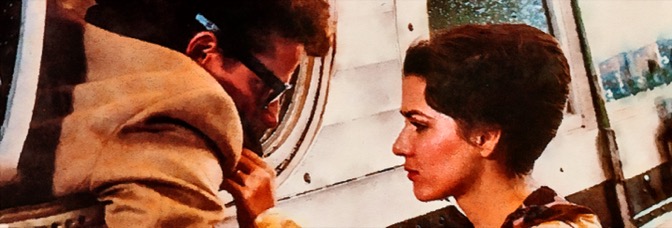There are three different things going on throughout The Buddy Holly Story. Well, more than three but there are the three big different things. There’s Robert Gittler’s screenplay, which has one narrative gesture for most of the film. There’s Gary Busey’s lead performance, which is resolute in both its sincerity and its anti-inscrutability. And there’s Rash’s direction, which enables both the script and the performance, but also leverages them to manage the scale.
Rash has a very determined narrative distance with The Buddy Holly Story. It’s Buddy Holly’s story. It’s Busey’s story. If he’s not in a scene, he’s about to be. Even when it’s not his scene, it ends up being his scene, because it’s all about him. Well, his performance. But Busey doesn’t do exposition. The performance doesn’t suggest a propensity for it, the script doesn’t pursue it. The other members in the band are there for exposition. Lovable standing bassist Charles Martin Smith and big but not dumb drummer Don Stroud. Even Amy Johnston, as Busey’s hometown girlfriend, expounds so Busey doesn’t. So the script’s got its own distance to its protagonist.
Because what the film becomes–and stays for quite a while–is these three guys journey into and through stardom. But not the pluses of stardom and not even the minuses (they’re implied and off-screen). They’re moving through the practicalities of it all. They’re at an information disadvantage, going from Lubbock to New York City by way of Nashville. Their actions can influence the trajectory but those actions tend to be reactions. Bluntly, the film positions the band as underdogs, even though they’re objectively not.
American music in the fifties had an enumeration of creatively significant artists working independently, simultaneously, and in both active and passive conjunction. Lots of big things happened in music, including Buddy Holly and some of the other musical acts portrayed in the film. Rash and Gittler consciously keep the characters’ anticipation and trepidation separate from the audience’s. The film is very sad. But it’s not sentimental. It’s sad. It’s guardedly, but enthusiastically nostalgic.
But it’s also very softly lighted–by Stevan Larner–on these often empty sets. Joel Schiller’s production design is great but outside musical set pieces, a lot of the film is just the three guys in sparse interiors. Usually without natural light sources. If there were fluorescent lights all over the place in the fifties, The Buddy Holly Story would be mostly in fluorescent lighted rooms with Busey discovering how far his creative ambitions can go and how to get them there and Stroud and Smith trying to keep up.
There are also bigger scenes, but they’re near vignettes. Like when Busey and the boys go play the Apollo and the white manager (Dick O’Neill) is terrified of putting up the three white boys from Texas for his black customers. The micro-subplot where Busey and the boys tour with Sam Cooke (Paul Mooney). They’re these clumps of larger scale scenes with the band scenes–which do eventually involve other supporting cast members, but as background–handling the narrative progress.
Then in the mid-to-late second act the film spotlights Busey as he branches off from the musical journey plot line to romance Maria Richwine. And the spotlight stays on Busey even away from those scenes. The film doesn’t really change its narrative distance, just its focus… by fading out around Busey. But never isolating him.
It’s a neat trick. Rash and Gittler do a lot with a lot. They’re even able to get away with the obviously historical location footage from establishing shots later on. It’s almost a gradual trust issue. The film doesn’t exactly lull its audience, but it invites a comfortable relationship.
Because the film is a true story and it’s a tragedy and even if you’re going into it completely unaware as a viewer, the filmmakers are aware and they take on certain responsibilities. And everyone making Buddy Holly Story–Rash, Gittler, Busey, Stroud, Smith, and whoever else–are embracing those responsibilities. The film’s astoundingly self-confident from the first scene. It’s never showy but it never meanders either. It doesn’t wander. Rash is guiding that flow, with a variety of styles, and each one has to hit just the right tone.
Not always easy when there are budgetary restrictions. Some of those interiors are sparser than they ought to be.
When the Story gets to the end, the film does just the right thing. It’s not an entirely unexpected thing, it’s not a surprise, but it’s neither the most or least obvious. But then Rash and Gittler haven’t been worried about the audience’s expectations, they’ve been tracking Busey’s. So it’s sort of the inevitable right thing. And you want it to go on forever.
The acting’s all good or better. Busey’s phenomenal. Then there’s the lip-synching. There isn’t any. So that enthusiastic nostalgia without any betraying of the verisimilitude and whatnot. Because Rash and Gittler are taking it seriously.
So it’s like it should be a surprise The Buddy Holly Story is such a success, but it also couldn’t be anything but.

Leave a Reply